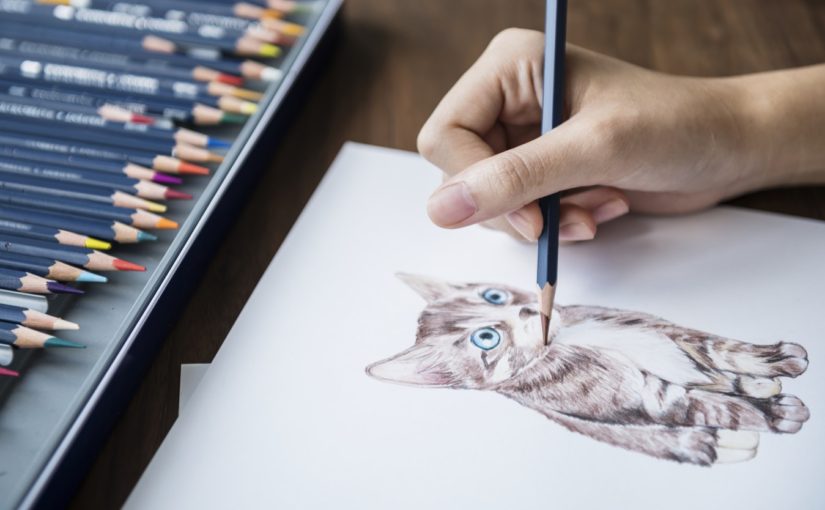by Jackie Edwards
A research study designed to test students’ ability to think in divergent ways in order to generate multiple solutions or ideas found that when the group of children was tested as preschoolers, 98% were considered to be geniuses in divergent thinking. This percentage went down to just 10% when tested at 14 to 15-years-old. The findings seemed to suggest that children lost their ability to think in divergent ways, which is crucial in scientific study and research, as they lost their natural childlike curiosity and creativity.
The act of drawing is an act of recording, and science is one of the most, if not the most, important areas in which it is crucial to record data in order to make sense of patterns and develop insights and hypothesis. It is likely, for this reason, that ancient Greek mathematicians used diagrams to express their findings instead of equations. While students of science are likely not developing world-changing equations and methods in their science classrooms, drawing still proves to be beneficial in helping them retain material and expand their reasoning capabilities.
The effects of drawing on model-based reasoning
The act of drawing is important for artists, students and scientists alike as it enables them to activate visual model-based reasoning. One study even noted that “visual representations are a powerful tool, because they help to make the unseen seen and the complex simple.”While this type of model-based reasoning is useful, it is much more impactful if it is backed up by intuition and highly-developed observational skills that art can add to the equation.
Another study, aimed at helping science students improve their observational skills and show them the interconnectedness of the arts and the sciences, designed a drawing class for students to take before a subsequent biology class. Students who participated in the study indicated that the drawing class helped them make better observations in the biology course.
While this study was focused on drawing the biology-related terms and images, it seems to be that drawing features such as faces, physical attributes, and other anatomy-driven concepts has the ability to increase observational skills in a way that induces deeper retention of scientific material.
Drawing for learning in Science classrooms
Drawing caters to individual learning differences, allowing students to express their learning process in a unique way and find their way to certain scientific terms and tasks in their own manner. Furthermore, research has shown that if students are able to draw a concept to understand it better, they learn to reason creatively in a way distinct from, but complementary to, reasoning through argumentation.
As research develops in this area of learning, teachers and scientists should explore what mental mechanisms exactly drawing involves in order to understand how to incorporate it into the classroom in a way that is conducive to not only scientific learning, but learning in a general sense. From the Great Pyramids to the works of Da Vinci, centuries of engagement in model-based reasoning, visual-based learning and the combination of science and the arts have proven that it is a beneficial mixture in both learning and culture.
